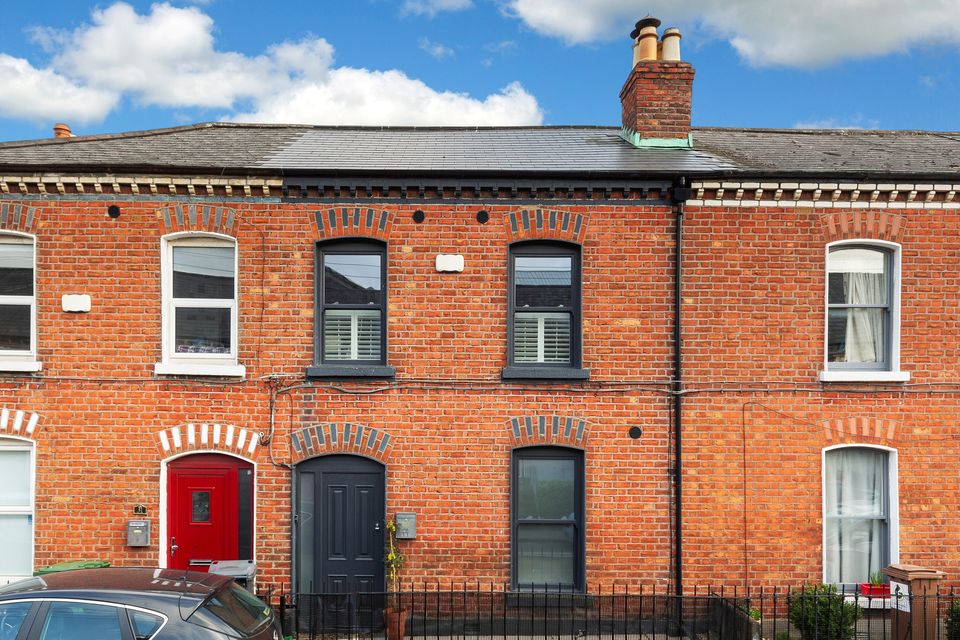29 Glengarriff Parade, Phibsborough, Dublin 7 Asking price: €615,000 Agent: Sherry FitzGerald The current owners of 29 Glengarriff Parade moved there from the city centre back in 2018, on their way up the property ladder and towards the relative quietude of a semi-suburban location. A hundred years earlier, another couple, Patrick Murphy and his wife Agnes, moved to the same address to get away from a different kind of pandemonium – the fighting that broke out on the north side of Dublin city on April 24, 1916. In this case, the Murphys were forced to flee their home and business on the upper floors of 2 Lower Abbey Street (roughly opposite Wynne’s Hotel), where they lived and ran a tailoring business.
Read more When, a week or so later, they felt it safe to walk into town and inspect their former home, they must have been heartbroken at the destruction of their premises, which had been levelled by a week of heavy fighting between the rebels and the forces of the British Empire. Lower and Middle Abbey Street were the worst affected during the insurrection, with a total of 41 properties destroyed. After the devastation of Easter week, as many of the property owners and businesspeople of the north inner city were either uninsured or underinsured, a consensus emerged that the government should make good the losses to private citizens.

The living room The British were not unaware of the effect on public opinion of the executions, mass arrests and deportations taking place in the wake of the Easter Rising, and given much of the destruction was caused by the British forces’ use of artillery, it might have proved unpopular not to offer recompense. The Dublin Fire and Property Losses Association was set up to deal with claims, with the participation of local businessmen including the notorious William Martin Murphy, whose own interests – including Clerys department store, the Imperial Hotel and Dublin United Tram Company – were affected. Individuals were invited to make claims to the committee for materials lost through either burning or looting, but non-material claims, such as for loss of business, were not entertained.
The kitchen The Murphy’s claim was discovered in the National Archives by the current owners of No 29, and the inventory of furniture and personal effects listed by the Murphys as destroyed gives insight into how they must have lived their lives. The list includes a marble clock, a set of religious pictures, a gramophone and record collection numbering some 50 discs, and a card table. Also destroyed were the couple’s tools of the trade, including a Singer sewing machine, a full-length mirror and a number of half-made ‘costumes’.
In total, almost £2m in compensation was approved by the committee. The Murphys sought compensation of £267 – a sum that might have buying power in the region of €35,000 in today’s money. The utility room Though the current owners have also escaped the hubbub of the city centre, where they previously lived in the Irish Life Centre on Talbot Street, the area has offered a different kind of refuge.
“Phibsborough was perfect because it’s like you have the city at your fingertips. You can hop on the Luas. You can walk anywhere.
Sure, I walk most places anyway, so it’s brilliant.” The house, when they found it, was in “fairly rough” shape, according to the vendor, but it was the sort of location they craved. “There was a lot of work to be done in it.
We pretty much just gutted the house and did anything that had to be done to it. We did a re-roof, a re-wire and so on over about a year.” One of the three bedrooms It was during the renovations that the vendor discovered the connection to the revolutionary period when she took a look in the National Archives.
She says: “I just thought it was really interesting. You hear a lot about 1916 and the famous people associated with it like Pearse and Connolly, but you don’t really ever hear about the ordinary people who might have been caught up with it.” Not long after they moved into No29, the present owners were forced to take cover of a different kind when some of the coldest weather on record arrived.
“I am a really cold creature so I wanted a warm house, and we really did get that. We moved in in February 20, 2018, and then we had the ‘Beast From the East’ just a couple of weeks afterwards. So the house really got a litmus test to see how warm it was, and it passed with flying colours.
” The back garden A couple of years later came the Covid-19 pandemic. “Actually, it was brilliant because we had just got the back garden done,” the vendor says. “It was a lifesaver, as obviously you couldn’t go anywhere and you were working from home.
It was fantastic of an evening just go out and enjoy it.” Number 29 has three bedrooms and just over 1,000sq ft of living accommodation overall. The warmth the owner spoke of translates to a B3 building energy rating (BER), courtesy of the new windows, doors and roof, as well as thermal solar panels for heating water, which also contribute toward reduced electricity bills.
The entrance hall There is a hallway with under-stairs storage and laminate flooring, and the main living room, kitchen and dining areas off to the right. The living room has a gas fire. The kitchen has a central island which is also used for dining, and there are sliding doors leading out to the low-maintenance garden.
To the rear is a utility room with a sink, storage cupboards, shower room and access to the garden. Upstairs is a second shower room, two double bedrooms and a single room which is currently in use as a home office. Sherry FitzGerald is seeking offers in the region of €615,000.
Read more.
Entertainment

Terraced Phibsborough red brick with modern energy upgrades once offered haven from Easter Rising

29 Glengarriff Parade, Phibsborough, Dublin 7














